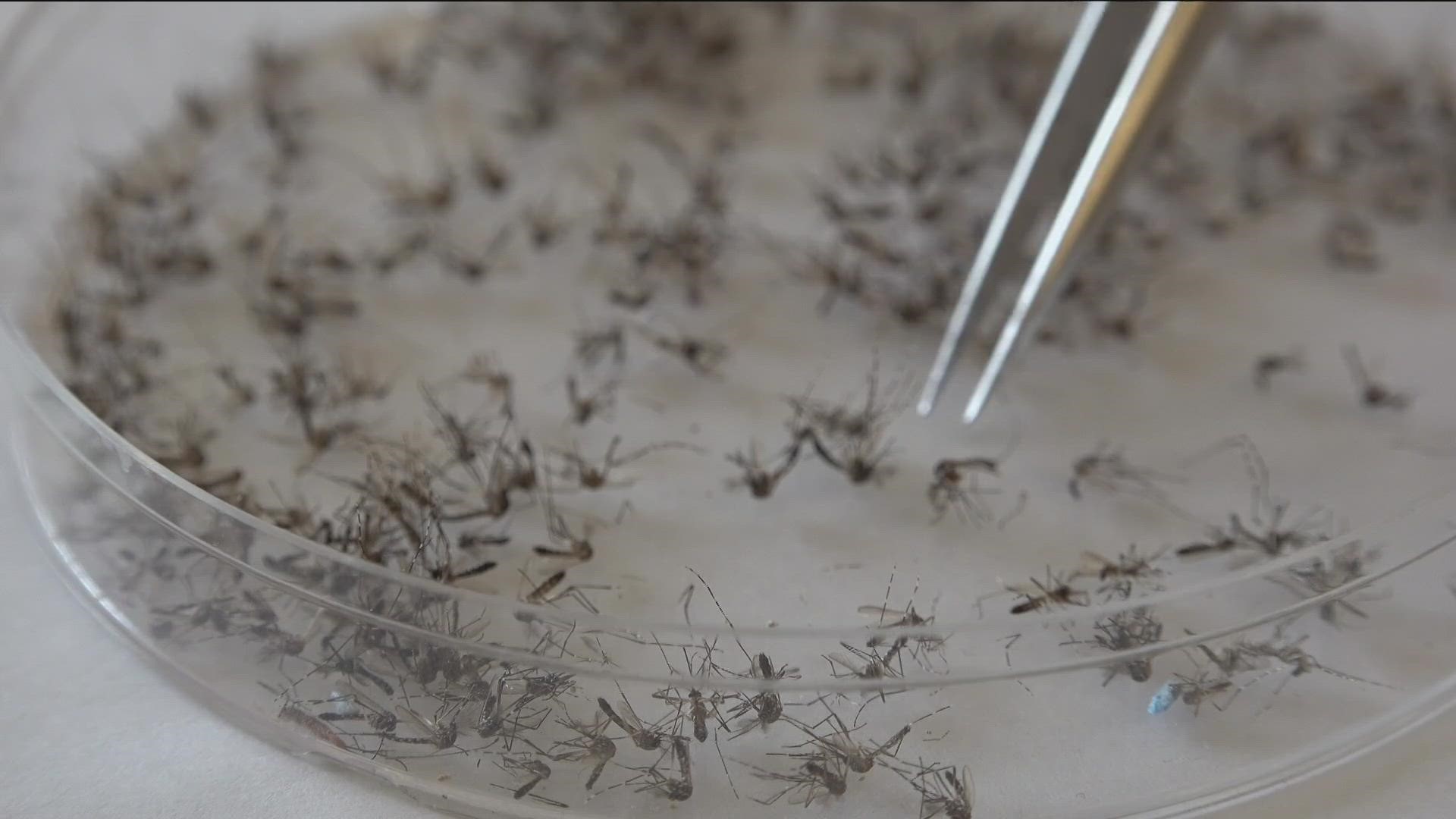SAN DIEGO — This rainy season has brought much-needed precipitation to California, helping everything grow, including pests like mosquitoes.
San Diego has about two dozen native Mosquitoes, but it's a non-native that has Chris Conlan, the Supervising Vector Ecologist with the County of San Diego, most concerned.
"One, in particular, is called Aedes aegypti, also known as the Yellow Fever Mosquitoes; it's a very small Mosquito," Conlan said.
These Mosquitoes need very little water to multiply, according to Conlan.
"It's very good at developing very small sources of standing water. Plant saucers, small cups, even bottle caps would be enough to breed a few Mosquitoes," Conlan said.
And this year, there's plenty of water.
"If we continue to get rain at regular intervals, it will create more water out there. Water sources could double in size in the places we have to treat and keep the Mosquitoes from getting out of hand," Conlan said.
Temperatures are cold, slows growth, so now is the time to remove standing water.
"Probably one of the most notorious ones is pots with these overflow saucers at the bottom," he said.
Anything that holds water is a breeding area, toys, tarps, and frisbees; if it holds water, Mosquitoes will find it.
And if you collect rain or have a small pond, the County of San Diego offers a free solution, Conlan said.
"We have a type of fish called a Mosquito Fish. It looks like a Minow; they're great for small ponds and fountains," Conlan said.
Pet owners should also be concerned.
"When it comes to the Aedes aegypti, this new invasive, what that one has done has raised the level of concern for Heart Worn," Conlan said.
With warmer weather, it doesn't take long for Mosquitoes to multiply.
"Those eggs can go from egg to adult in about a week," Conlan said.
And include your neighbors to be part of the solution.
"So, if everybody gets onboards eliminating that standing water, the whole neighborhood knocks down the biting pressure, and life will be much better for those backyard BBQs," he said.
WATCH RELATED: Powerful storms transform San Diego County beaches (Jan. 2023).

